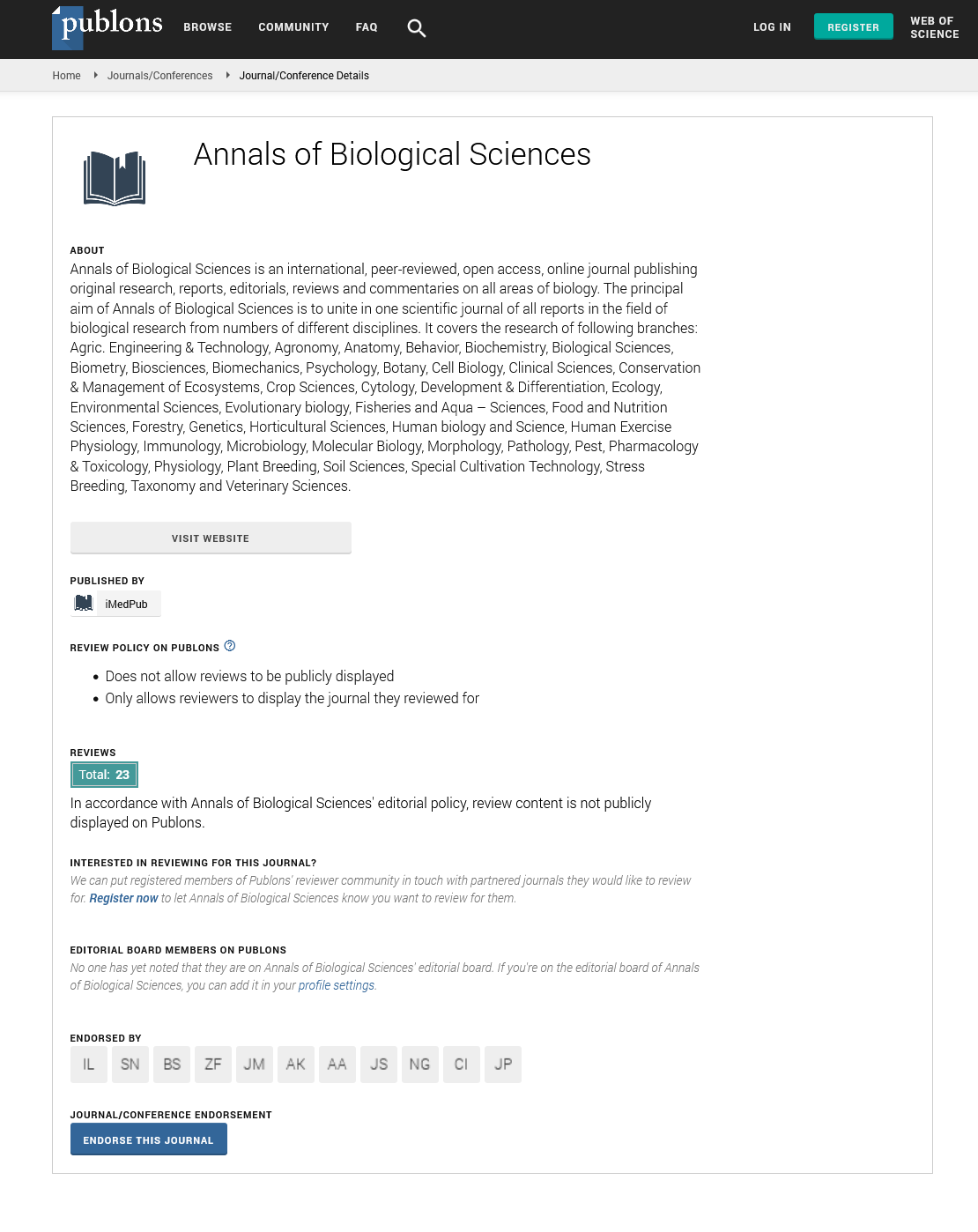ISSN : 2348-1927
Annals of Biological Sciences
Renovation of the injured myocardial tissue with new conductive, biodegradable, and non-cytotoxic polymer matrix coated with fibrin glue nanocomposite scaffold
ANNUAL BIOTECHNOLOGY CONGRESS
August 17-18, 2017 | Toronto, Canada
Sharareh Ghaziof and Mehdi Mehdikhani-Nahrkhalaji
Islamic Azad University, Iran
University of Isfahan, Iran
Posters & Accepted Abstracts: Ann Biol Sci
DOI: 10.21767/2348-1927-C1-003
Abstract
Acute myocardial infarction (AMI) occurs when a coronary artery is clogged, in 80% of the cases, by coronary atherosclerosis with superimposed luminal thrombus. This occlusion leaves the downstream zone of the heart without blood supply. As a result, the papillary muscles are separated, what leads to regurgitation, contributing to the overload of the heart. Cardiac muscle engineering aims at providing functional myocardium to repair diseased hearts and model cardiac development, physiology, and disease in vitro. The objective of the present in vitro study was to prepare, characterize and assess polycaprolactone (PCL)/ fibrin glue (FG)/multi wall carbon nanotube (MWCNTs) nanocomposite scaffolds, to guide regeneration of myocardial tissue. For this purpose, two different weight ratio of multi wall carbon nanotubes (1 and 0.5 % wt) were added to the pure PCL polymeric scaffold by solvent casting process. The nanocomposite scaffolds were coated by fibrin glue and the solvent was removed from the structure by freeze drying technique. Characterization technique such as Scanning Electron Microscopy (SEM), Transmission Electron Microscopy (TEM), FT Infrared Spectroscopy (FTIR) and X-ray Diffraction (XRD) were performed. Tensile tests were carried out for evaluating the mechanical properties. To evaluate the cytotoxicity of scaffolds, MTT assay were performed with mouse myoblast cells in 1, 4 and 7 days. Biodegradability, electrical conductivity as well as contact angle and wettability of the nanocomposite scaffolds were investigated. Carbon nanotubes have crystalline structure, electrical conductivity, and particle size was in the range of 20-30 nanometer. Both coated and uncoated nanocomposite scaffolds showed appropriate cell response during the period of specified times. Meanwhile, the adhesion of the cells was more for coated nanocomposite scaffolds. Addition of MWCNTs to the pure PCL polymeric scaffolds significantly raised the electrical conductivity. MWCNTs have a good adhesion with fibrin glue in coated samples. In the presence of carbon nanotubes, the elastic modulus of the nanocomposite scaffolds compare to the pure PCL polymeric scaffolds were increased. In vitro degradation assessment exhibited that samples had significant weight loss after two months and the degradation of the samples were increased not only by adding MWCNTs but also by coating the samples with fibrin glue. In the presence of fibrin glue, nanocomposite scaffolds became hydrophilic and contact angle was decreased. It was concluded that bioactive, degradable and electrical conductive nanocomposite scaffolds made of polycaprolactone/fibrin glue/multi wall carbon nanotubes could be used as an appropriate construct for reconstruction and restoration of damaged myocardial tissue.
Biography
Sharareh Ghaziof has completed her Master’s degree in Biomedical-Tissue Engineering from Islamic Azad University, Najafabad Branch, Najafabad, Iran. She has developed her passion for academic research and experiences in tissue engineering, drug delivery and related topics at University of Isfahan and Isfahan University of Medical Science (Central laboratory, School of Medicine).
Google Scholar citation report
Citations : 406
Annals of Biological Sciences received 406 citations as per Google Scholar report
Annals of Biological Sciences peer review process verified at publons
Abstracted/Indexed in
- Google Scholar
- China National Knowledge Infrastructure (CNKI)
- WorldCat
- Publons
- ROAD
- Secret Search Engine Labs
Open Access Journals
- Aquaculture & Veterinary Science
- Chemistry & Chemical Sciences
- Clinical Sciences
- Engineering
- General Science
- Genetics & Molecular Biology
- Health Care & Nursing
- Immunology & Microbiology
- Materials Science
- Mathematics & Physics
- Medical Sciences
- Neurology & Psychiatry
- Oncology & Cancer Science
- Pharmaceutical Sciences
